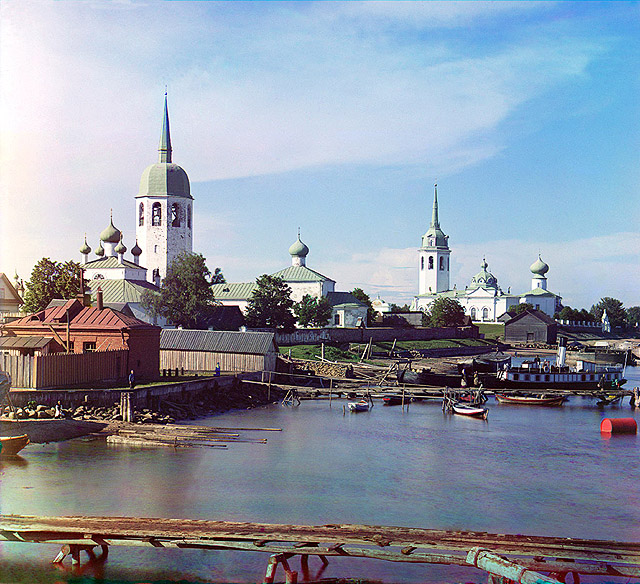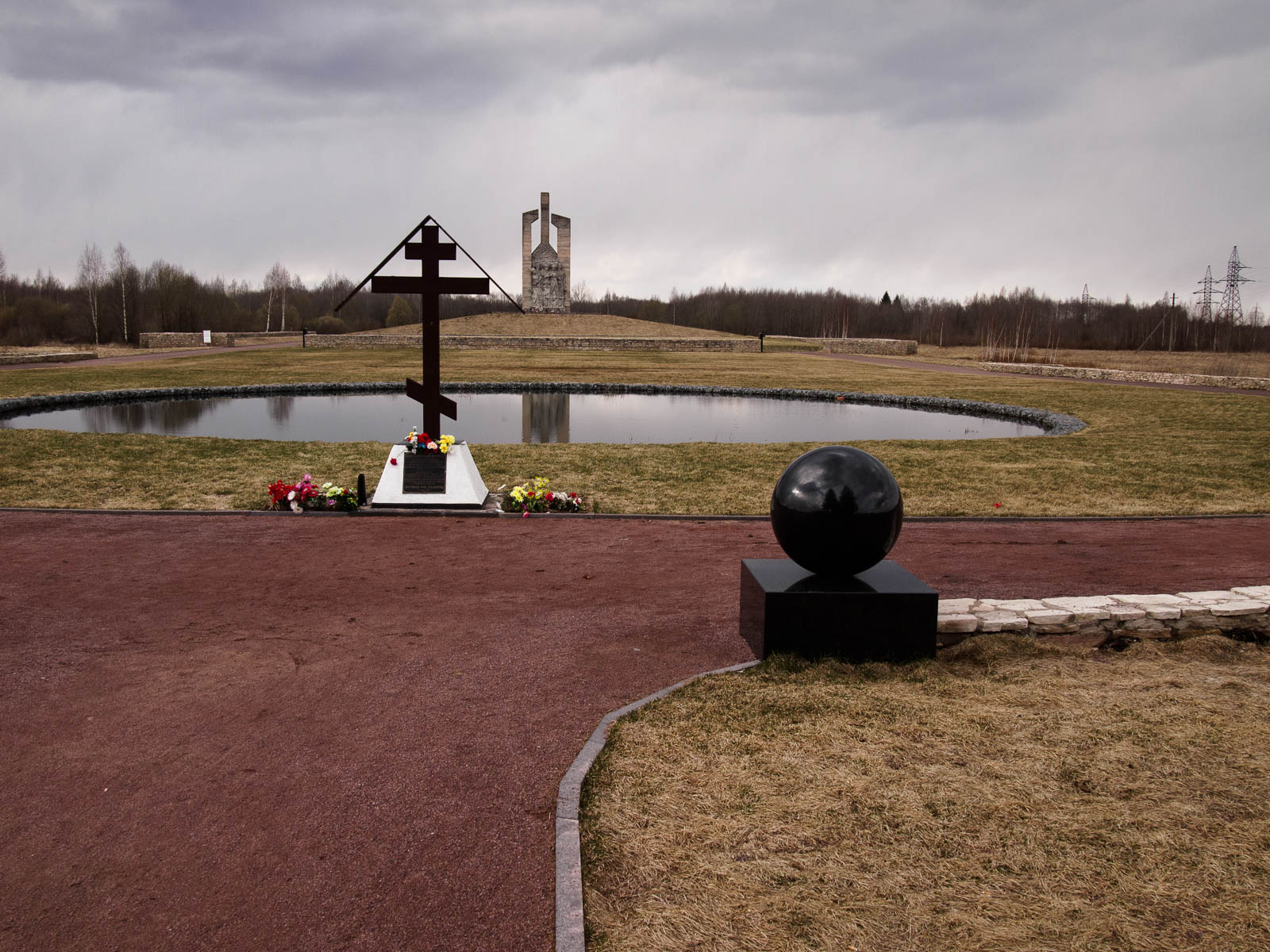|
Novgorod Governorate
Novgorod Governorate was an administrative-territorial unit (''guberniya'') of the Russian Empire and the Russian Soviet Federative Socialist Republic, Russian SFSR, which existed from 1727 to 1776 and from 1796 to 1927. Its administrative center was in the city of Veliky Novgorod, Novgorod. The governorate was located in the northwest of the European part of the Russian Empire. History The governorate was established in 1727 from Belozersk, Novgorod, Pskov, Tver and Velikiye Luki Provinces of Saint Petersburg Governorate, St. Petersburg Governorate. It was abolished by a decree (''ukase'') of Catherine II of Russia, Catherine II on , 1776, which established Novgorod Viceroyalty, Novgorod and Tver Viceroyalty, Tver Viceroyalties instead. Novgorod Viceroyalty included Novgorod Oblast, Russian Empire, Novgorod and Olonets Oblast, whereas Tver Viceroyalty was made of the former Tver Province. The viceroyalty was never formally abolished, however, after a number of administrati ... [...More Info...] [...Related Items...] OR: [Wikipedia] [Google] [Baidu] |
Governorate (Russia)
A governorate (, , ) was a major and principal administrative subdivision of the Russian Empire. After the October Revolution, Bolshevik Revolution in 1917, governorates remained as subdivisions in the Byelorussian Soviet Socialist Republic, Byelorussian, Russian Soviet Federative Socialist Republic, Russian and Ukrainian Soviet Socialist Republic, Ukrainian Soviet republics, and in the Soviet Union from its formation in 1922 until 1929. The term is also translated as ''government'' or ''province''. A governorate was headed by a governor (), a word borrowed from Latin , in turn from Greek (). Selected governorates were united under an assigned governor-general such as the Grand Duchy of Finland, Congress Poland, Russian Turkestan and others. There were also military governors such as Kronstadt, Vladivostok and others. Aside from governorates, other types of divisions were oblasts (region) and okrugs (district). First reform This subdivision type was created by the edict (ukas ... [...More Info...] [...Related Items...] OR: [Wikipedia] [Google] [Baidu] |
Olonets Governorate
Olonets Governorate was an administrative-territorial unit ('' guberniya'') of the Russian Empire, extending from Lake Ladoga almost to the White Sea, bounded west by Finland, north and east by Arkhangelsk and Vologda, and south by Novgorod and Saint Petersburg. The area was 57,422 km2, of which 6,794 km2 were covered by lakes. Geology Its north-western portion belonged orographically and geologically to the Finland region; it is thickly dotted with hills reaching 1,000 ft. in altitude, and diversified by numberless smaller ridges and hollows running from northwest to south-east. The rest of the governorate was a flat plateau sloping towards the marshy lowlands of the south. The geological structure was very varied. Granites, syenites, and diorites, covered with Laurentian metamorphic slates, occurred extensively in the north-west. Near Lake Onega they were overlain with Devonian sandstones and limestones, yielding marble and sandstone for building; to the south ... [...More Info...] [...Related Items...] OR: [Wikipedia] [Google] [Baidu] |
Staraya Russa
Staraya Russa (, ) is a types of inhabited localities in Russia, town in Novgorod Oblast, Russia, located on the Polist, Polist River, south of Veliky Novgorod, the administrative center of the oblast. Its population has steadily decreased over the past years, going from 41,538 recorded in the Soviet Census (1989), 1989 Census to 35,511 in the Russian Census (2002), 2002 Census to 31,809 in the Russian Census (2010), 2010 Census. Etymology The origin of the name of Staraya Russa is unclear. The most involved and widespread hypothesis was presented by philologists and linguists R. A. Akheyeva, V. L. Vasilyev, and M.V. Gorbanevsky. According to this hypothesis, ''Russa'' (like ''Russia'') comes from the Rus' people, Rus'—a people who settled in the vicinity to control trade routes leading from Veliky Novgorod, Novgorod to Polotsk and Kiev—which, in turn, is usually thought to originate from an Old Norse term for "the men who row" (''rods-'') as rowing was the ma ... [...More Info...] [...Related Items...] OR: [Wikipedia] [Google] [Baidu] |
Staraya Ladoga
Staraya Ladoga ( rus, Ста́рая Ла́дога, p=ˈstarəjə ˈladəɡə, r=Stáraya Ládoga, t=Old Ladoga), known as Ladoga until 1704, is a rural locality (a '' selo'') in Volkhovsky District of Leningrad Oblast, Russia, located on the Volkhov River near Lake Ladoga, north of the town of Volkhov, the administrative center of the district. It used to be a prosperous trading outpost in the 8th and 9th centuries. During this period, it was known to the Norse as ''Aldeigjuborg''. It was dominated by Varangians who became known as the Rus'. For that reason, Staraya Ladoga is sometimes called the first capital of Russia; it is also regarded as one of the original centers from which the name ''Rus'' spread to other territories inhabited by the East Slavs. Etymology The settlement takes its name from a tributary of the Volkhov River, which itself is taken from the Finnish name ''Alodejoki'' ("low-lying river"), from ''alode'' ("low place") and ''joki'' ("river"). It was kn ... [...More Info...] [...Related Items...] OR: [Wikipedia] [Google] [Baidu] |
Novaya Ladoga
Novaya Ladoga () is a town in Volkhovsky District of Leningrad Oblast, Russia, located at the point where the Volkhov River flows into Lake Ladoga, east of St. Petersburg. Population: History The Nikolo-Medvedsky ( St. Nicholas) Monastery stood on the site of the modern town since the 15th century, but the nearby ''sloboda'' was long overshadowed by the first Russian capital, Staraya Ladoga, located just a few miles upstream. In 1702–1704, during the Great Northern War, Peter the Great established a shipyard there, fortified the monastery, and ordered the population of Staraya Ladoga to relocate to the nearby village. Town rights were granted to it in 1704. The newly founded town grew in importance in connection with construction of the Ladoga Canal and Volga–Baltic Waterway in the 18th and 19th centuries. In 1719, Novaya Ladoga was included to St. Petersburg Governorate. In 1727, separate Novgorod Governorate was split off, and in 1773 Novoladozhsky Uy ... [...More Info...] [...Related Items...] OR: [Wikipedia] [Google] [Baidu] |
Porkhov
Porkhov () is a town and the administrative center of Porkhovsky District in Pskov Oblast, Russia, located on the Shelon River, east of Pskov, the administrative center of the oblast. Population: History The fortress of Porkhov is believed to have been founded in 1239 by Alexander Nevsky. The timber fortress was sacked by Algirdas (Olgierd) in 1356 and fell in flames in 1387. The Novgorod Republic immediately rebuilt its fortifications in limestone downstream. In 1428, Grand Duke of Lithuania Vytautas destroyed the western wall by artillery fire and entered Porkhov. Two years later, the Novgorodians augmented the fortress and rebuilt its walls. After the fall of Novgorod to the Muscovites in 1478, the fortress lost its military importance. Porkhov was the second most important town of Shelon Pyatina, after Russa. It was not, however, a significant economical center—there were only seventy-six homesteads there in the 15th century and almost all of them were peasant on ... [...More Info...] [...Related Items...] OR: [Wikipedia] [Google] [Baidu] |
Olonets
Olonets (; , ; ) is a types of inhabited localities in Russia, town and the administrative center of Olonetsky District of the Republic of Karelia, Russia, located on the Olonka River to the east of Lake Ladoga. Geography Olonets is located at the confluence of the Olonka and Megrega rivers, on the Olonets Plain, southwest of Petrozavodsk, northeast of Saint Petersburg, St. Petersburg along the highway (R21 highway (Russia), «Kola» highway). History Olonets is the oldest documented settlement in Karelia, mentioned by Novgorod Republic, Novgorodian sources as early as 1137. Its history is obscure until 1649, when a fortress was built there to protect the Grand Duchy of Moscow against the Swedes. The same year it was granted town privileges. Until the Great Northern War, Olonets developed as a principal market for Russian trade with Sweden. To the south from the town, there sprawled a belt of fortified abbeys, of which the Alexander-Svirsky Monastery was the most import ... [...More Info...] [...Related Items...] OR: [Wikipedia] [Google] [Baidu] |
Novgorod Province, Novgorod Governorate
Veliky Novgorod ( ; , ; ), also known simply as Novgorod (), is the largest city and administrative centre of Novgorod Oblast, Russia. It is one of the oldest cities in Russia, being first mentioned in the 9th century. The city lies along the Volkhov River just downstream from its outflow from Lake Ilmen and is situated on the M10 highway (Russia), M10 federal highway connecting Moscow and Saint Petersburg. UNESCO recognized Novgorod as a World Heritage Site in 1992. The city has a population of At its peak during the 14th century, the city was the capital of the Novgorod Republic and was one of Europe's largest cities. The "Великий" part was added to the city's name in 1999. Climate Veliky Novgorod has a humid continental climate (Köppen climate classification, Köppen ''Dfb''). The city has warm summers with temperatures reaching over 30 °C (86 °F) and relatively cold winters with frequent snowfall. The lowest air temperature ever recorded is -45 °C ( ... [...More Info...] [...Related Items...] OR: [Wikipedia] [Google] [Baidu] |
Tver Oblast
Tver Oblast (, ) is a federal subject of Russia (an oblast). Its administrative center is the city of Tver. From 1935 to 1990, it was known as Kalinin Oblast (). Population: Tver Oblast is a region of lakes, such as Seliger and Brosno. Much of the remaining area is occupied by the Valdai Hills, where the Volga, the Western Dvina, and the Dnieper have their source. Tver Oblast is one of the tourist regions of Russia with a modern tourist infrastructure. There are also many historic towns: Torzhok, Toropets, Zubtsov, Kashin, Vyshny Volochyok, and Kalyazin. The oldest of these is Rzhev, primarily known for the Battles of Rzhev in World War II. Staritsa was the seat of the last appanage principality in Russia. Ostashkov is a major tourist center. Geography Tver Oblast is located in the west of the middle part of the East European Plain. It stretches for 260 km from north to south and 450 km from west to east. The area borders Yaroslavl Oblast in the east, ... [...More Info...] [...Related Items...] OR: [Wikipedia] [Google] [Baidu] |
Vologda Oblast
Vologda Oblast (, ; ) is a federal subjects of Russia, federal subject of Russia (an oblast). Its administrative center is Vologda. The oblast has a population of 1,202,444 (Russian Census (2010), 2010 Census). The largest city is Cherepovets, the home of the Severstal metallurgical plant, the largest industrial enterprise in the oblast. Vologda Oblast is home to many historic monuments, such as the Kirillo-Belozersky Monastery, Ferapontov Monastery (a World Heritage Site) with the frescoes of Dionisius, the two medieval towns of Velikiy Ustyug and Belozersk, and the baroque churches of Totma and Ustyuzhna. Large reserves of wood and fresh water are the main natural resources. History The area of Vologda Oblast was settled by Finnic peoples in prehistory, and most of the Toponymy, toponyms in the region are in fact Finnic. Vepsians, who still live in the west of the oblast, are the descendants of that population. Subsequently, the area was colonized by the Russians. Belozersk ... [...More Info...] [...Related Items...] OR: [Wikipedia] [Google] [Baidu] |
Arkhangelsk Oblast
Arkhangelsk Oblast ( rus, Архангельская область, p=ɐrˈxanɡʲɪlʲskəjə ˈobɫəsʲtʲ) is a federal subjects of Russia, federal subject of Russia (an oblast). It includes the Arctic Ocean, Arctic archipelagos of Franz Josef Land and Novaya Zemlya, as well as the Solovetsky Islands in the White Sea. Arkhangelsk Oblast also has administrative jurisdiction over the Nenets Autonomous Okrug (NAO). Including the NAO, Arkhangelsk Oblast has an area of , it is the largest of List of first-level administrative divisions by area, first-level administrative divisions in Europe. Its population (including the NAO) was 1,227,626 as of the Russian Census (2010), 2010 Census. The classification of inhabited localities in Russia, city of Arkhangelsk, with a population of 301,199 as of the 2021 Census, is the administrative center of the oblast.Charter, Article 5 The second largest city is the nearby Severodvinsk, home to Sevmash, a major shipyard for the Russian N ... [...More Info...] [...Related Items...] OR: [Wikipedia] [Google] [Baidu] |





